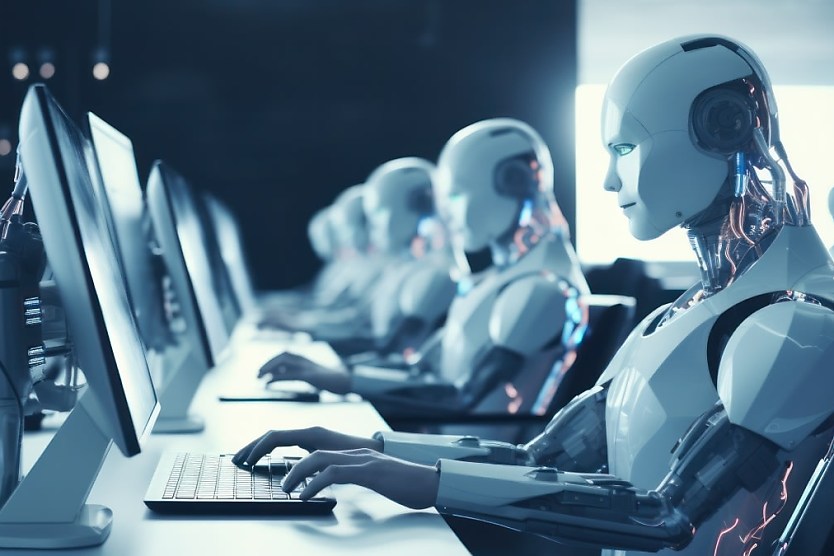How to build an AI-ready workforce
SHARE THIS ARTICLE

Some of Australia’s greatest AI minds have come together to call for better AI readiness and have broken down how best to get there.
Australia finds itself at an inflection point when it comes to artificial intelligence (AI). Despite recent government funding commitments, the question of whether Australia will become a leader or a latecomer in cutting-edge tech is still very much an open one.
Against this backdrop, 13 of Australia’s leading AI experts have pooled their thoughts in a new joint report from the Australian Academy of Technological Sciences and Engineering (ATSE) and the University of Adelaide’s Australian Institute for Machine Learning (AIML).
The message: AI is coming, and Australia needs to be ready. That said, it must be done responsibly and with regard to the potential consequences arising from reckless AI development and use.
Among the experts is Professor Katrina Falkner of the University of Adelaide, who shared her thoughts on how Australia can and should build an AI-ready workforce.
“While we don’t know what the future workplace is going to look like, we do know that AI is already fundamentally changing it and the skills that our future workforce will need,” said Professor Falkner.
Getting there, she said, will take the following:
1. Invest in STEM (science, technology, engineering, and mathematics)
To benefit from the coming wave of AI innovation and adoption, Australia will need a digitally literate workforce. Especially, said Professor Falkner, the training must begin with “promoting core digital literacy and AI awareness of basic AI concepts, tools, and platforms along with broader digital literacy skills”. Additionally, we need to build a better understanding of the ethical and societal implications of broader AI adoption.
AI training and education should begin in schools and continue through to university and other educational institutions and into the workplace. Crucially, said Professor Falkner, the education must be ongoing. A one-and-done style approach would fail to address the continually changing nature of AI technologies.
Though educational institutions will be at the core of boosting AI-readiness, Professor Falkner made it clear that industry, too, has a role to play.
“Industry needs to partner with educational institutions to invest in the reskilling and upskilling of their teams and to support workers transitioning from declining industries into AI-driven fields, mitigating job displacement and supporting economic growth,” said Professor Falkner.
The training will not be limited to students; teachers will also need to upskill on an ongoing basis to pay the knowledge forward. This will require broader investment in existing professional development institutions and the development of new, industry-focused training bodies.
“We are not starting from nothing,” said Professor Falkner. “We can continue to support the many existing STEM-focused professional learning programs that are currently supporting so many of our teachers.”
2. Promote diversity
Innovation benefits from a diversity of thought. Ensuring that our workforce is composed of people from across a wide range of backgrounds will likely foster a more forward-thinking AI marketplace.
For instance, a study conducted by The Wall Street Journal found that companies with greater diversity and inclusion generally enjoyed a substantial competitive edge over less diverse competitors.
Earnings before interest and tax, noted Forbes, for companies with diverse management are, on average, 10 per cent higher than those with below-average management diversity.
Getting more women into AI will likely be a major part of boosting diversity and inclusion in the field. According to UNESCO, gender disparity is widespread across all tech fields and, concerningly, even more so in tech education.
“We need to promote diversity and inclusion in our offerings. Encouraging our next STEM generation to see its place in the future STEM workforce will set us up as a nation ready to harness the diversity of thought needed for innovation and creativity, leading to robust and ground-breaking solutions that reflect the needs of our society,” said Professor Falkner.
3. Don’t forget non-STEM
The impact zone of AI technologies will extend beyond STEM. As noted by Professor Falkner: “This is not intended to encourage all students to pursue a career in STEM.”
“We also need to consider how students across all discipline (and workforce) areas will build their knowledge of AI, and of how to leverage it, how to work with it, and when to trust it.”
Indeed, as noted by the Harvard Business Review, even creative industries – those typically thought of as fundamentally human and invulnerable to automation – are being shaken up.
“Learning about how AI is being applied across different fields, including healthcare, finance and customer service, will open up new opportunities and career pathways for all graduates and help all of our industry sectors embrace what AI can offer,” said Professor Falkner.
4. Build
Becoming a leader in AI will take better tech infrastructure and a lot more of it. Investments should target high-speed internet and cloud computing services to boost accessibility across the country. Further, said Professor Falkner, there should be a greater availability of programs designed to promote and support entrepreneurship and AI innovation.
“Encouraging start-ups and small businesses to engage with AI will be critical to building a workforce ready to take on the challenge of AI and to foster and keep our future generations of STEM graduates,” she concluded.
RELATED TERMS
The term "workforce" or "labour force" refers to the group of people who are either employed or unemployed.
Nick Wilson
Nick Wilson is a journalist with HR Leader. With a background in environmental law and communications consultancy, Nick has a passion for language and fact-driven storytelling.

